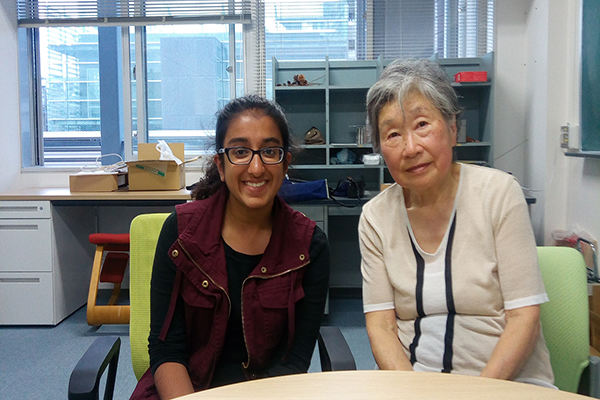Shivani Shukla
Japan

Q: What motivated you to study abroad during your time at Carnegie Mellon University?
A: Growing up in the suburbs of New Jersey instilled a strong desire in me to travel around the world. I read stories from around the world, held benefit concerts for communities in South America, and aspired to be an ambassador. When I got to college, I realized I could pursue this global experience in alignment with my engineering education. I went to the Study Abroad fair and learned about Rice University’s Nakatani-RIES program, which sponsors students to research nanotechnology in Japan. This seemed like the perfect opportunity to merge my passions for STEM and travel, so I went for it.
Q: What variables influenced your decision to pursue a summer opportunity in your location of choice?
A: There are research abroad programs in many countries, but Nakatani-RIES was one of the few open to first-year undergraduates. Upon being accepted, I chose the Shinohara lab at Nagoya University because of its cutting-edge research in synthesizing carbon nanotubes containing functional materials.
Q: What did the summer research entail?
Nakatani-RIES offers a month-long cultural orientation program in Tokyo, followed by two months of research at different universities across Japan. During the orientation, students take Japanese language lessons, and attend seminars about Japanese culture, religion, politics, etc. We took trips to Mt. Fuji Lakes, the University of Tokyo, a taiko drumming lesson, strawberry picking, and the Sysmex Corporation, a medical electronics company. All of our programmed trips were incredibly informative and fulfilling. My favorite part was meeting our Japanese student counterparts at Mt. Fuji Lakes. We became friends right away and truly transcended cultural barriers, which was difficult to do in a lab setting. During our research experiences, we worked closely with graduate students and faculty members to learn research skills in nanotechnology and understand concepts underlying groundbreaking work being done around the world. I was able to attend the annual ERATO Itami Molecular Nanocarbon Symposium, the Nagoya University Dept. of Chemistry softball game, and learn how to use a Transmission Electron Microscope (TEM) which are generally only accessible to graduate students. Following our stay in Japan, we traveled back to Rice University and presented our research at the Smalley-Curl Summer Research Symposium.
Q: Name a few of your favorite landmarks/cities/experiences from your time abroad.
A: Meeting biology legend Prof. Tsuneko Okazaki, who discovered Okazaki fragments with her husband in the 1960s
Playing softball (and badminton and Frisbee) with my lab at the location of the 2005 World Expo. It was really fun because I got to know my lab members in a more personal way outside of work.
Going to Brook’s Green Café, an aquaculture-harvesting café in Harajuku, a popular shopping district in Tokyo. We had a lot of time to explore Japan alone, and it was nice to just sit and reflect on everything I’d learned.
Aichi Arts Fiesta at Oasis 21, a spaceship-like construction in Nagoya. There, hundreds of artists were hand painting incredible canvases live.
Attending the International 2017 RoboCup competition with my friends, both American and Japanese. The robots and company were incredible.
Accidentally attending Nagoya’s World Cosplay Summit. I met Deadpool! Even the Mayor of Nagoya dressed up.
Q: During your study abroad experience, what did you learn about yourself that surprised you?
A: I learned that I have a good knack for reaching out to people. I was so curious about all of the global perspectives I encountered during my travels, and this helped me overcome my initial shyness and reluctance to begin the conversation. I’m grateful that I was able to have some memorable conversations, such as speaking with Prof. Okazaki about her life and work, and with an Australian PhD student from RoboCup who works with Steve Wozniak, among others. Definitely wish I spoke Japanese though, so I could have had more enlightening conversations.
Q: Why should CMU students study abroad during their time as a Tartan?
A: Carnegie Mellon is an incredibly international campus, and I feel that we forget that sometimes. We often stay within our own bubbles of comfort and don’t stray outside of our own cliques. Yet CMU’s diversity shows how we operate – how we innovate and collaborate at a global scale, which is inevitable in this “interconnected” age. Studying abroad can provide students with empirical tools to break through cultural barriers both in an academic setting, and professionally, to grow into global citizens that the world needs.